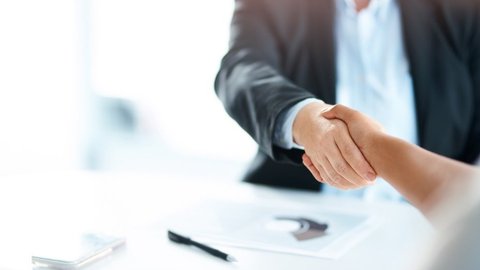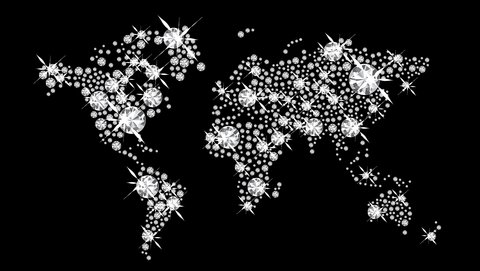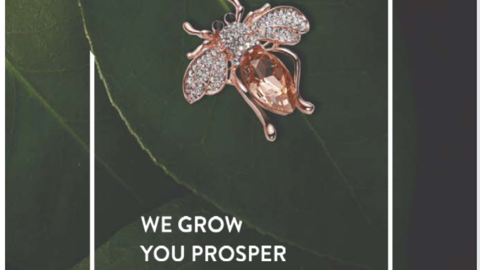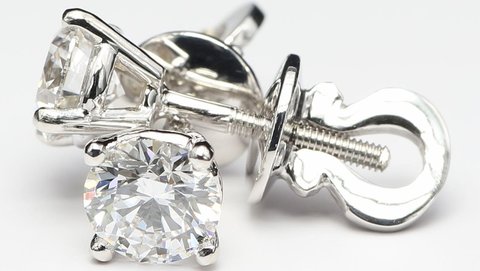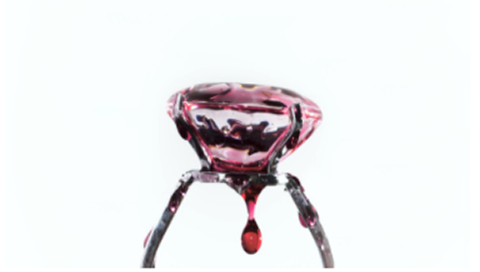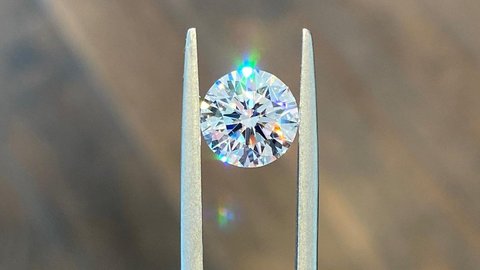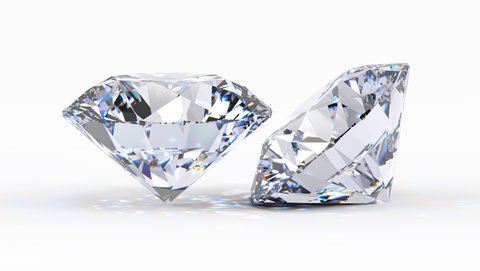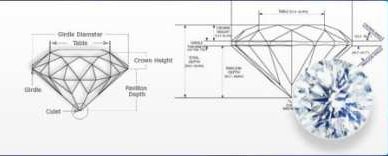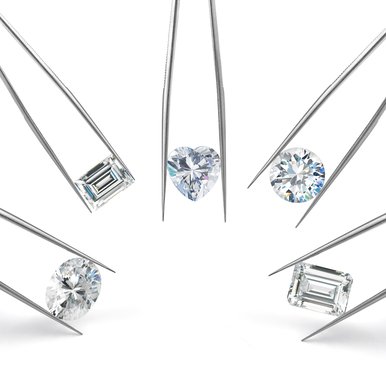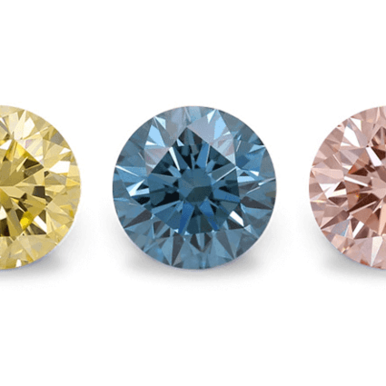Emerald Cut Diamond Buying Guide

Why Emerald Cut Lab-Grown Diamonds Are the Sophisticated Choice
Emerald cut diamonds represent the pinnacle of understated elegance, combining Art Deco glamour with contemporary sophistication. Originally developed in the 1500s for emerald gemstones, this rectangular step-cut design creates a unique "hall of mirrors" optical effect through its distinctive stepped facets.
[Image needed: Side-by-side comparison of emerald cut vs round brilliant cut diamonds showing the different light patterns]

At Labrilliante, we've seen growing demand for emerald cut lab-grown diamonds among discerning buyers who appreciate clean lines and timeless appeal. Celebrity endorsements from Beyoncé, Amal Clooney, and Jennifer Lopez have elevated this sophisticated shape's desirability. The emerald cut's elongated silhouette appears larger than round diamonds of the same carat weight while offering exceptional value in lab-grown diamonds.

Understanding Emerald Cut Design and Anatomy
The emerald cut is a step-cut diamond featuring 57 carefully arranged facets that create its signature rectangular silhouette. Unlike brilliant cuts with triangular and kite-shaped facets designed for maximum fire, emerald cuts utilize parallel step-like facets that run along the diamond's perimeter, creating broad flashes of light rather than intense sparkle.

This step-cut architecture produces the coveted "hall of mirrors" effect - a series of reflective planes that create depth and visual intrigue. The large, open table (top facet) acts as a window into the diamond's interior, while the stepped crown and pavilion facets frame and amplify light reflection. This design makes emerald cuts appear significantly larger than brilliant cuts of identical carat weight, offering exceptional visual impact.
The rectangular shape with cropped corners not only prevents chipping but also enhances the diamond's sophisticated geometric appeal. These beveled corners, called "cut corners," are essential for both durability and the classic emerald cut aesthetic. The elongated proportions create a finger-flattering effect that visually lengthens the hand while maintaining elegant proportions.
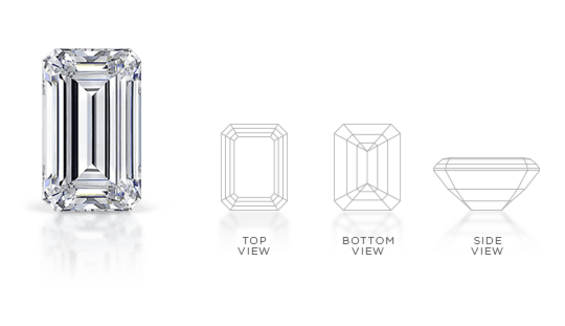
Emerald Cut Proportions: The Foundation of Beauty
Cut quality is paramount for emerald cut diamonds, as poor proportions are immediately visible through the large, open facets. Unlike brilliant cuts where minor proportion variations are masked by intense sparkle, emerald cuts demand precision in every measurement. At Labrilliante, we carefully select lab-grown emerald cuts that meet these exacting standards.
Critical Girdle Considerations: Pay special attention to girdle thickness - it should be proportionate and uniform. Some cutters deliberately leave thick girdles to add carat weight, but this creates a bulky appearance without improving beauty. Conversely, very thin girdles compromise structural integrity, especially at the vulnerable corners where chipping is most likely to occur.
Emerald Cut Diamond Table
| Measurement | Excellent | Very Good | Good | Avoid |
|---|---|---|---|---|
| Table % | 61-69% | 57-60% / 70-72% | 54-56% / 73-75% | <54% / >75% |
| Depth % | 61-67% | 59-60.9% / 67.1-70% | 57-58.9% / 70.1-74% | <57% / >74% |
| Length/Width Ratio | 1.30-1.50 | 1.25-1.29 / 1.51-1.60 | 1.20-1.24 / 1.61-1.70 | <1.20 / >1.70 |
| Girdle | Very Thin to Slightly Thick | Thin to Thick | Very Thin to Very Thick | Extremely Thin/Thick |
| Polish | Excellent | Very Good | Good | Fair or Poor |
| Symmetry | Excellent | Very Good | Good | Fair or Poor |
[Image needed: Side-by-side comparison showing well-proportioned vs poorly proportioned emerald cuts highlighting the visual differences]
Symmetry is absolutely critical for emerald cuts. Any asymmetry in the step facets, uneven corners, or misaligned pavilion creates immediate visual distraction. The girdle should be uniform and appropriately sized - too thin risks chipping, while too thick appears bulky and reduces brilliance. Polish quality directly affects the hall of mirrors effect, making "Excellent" grades essential for optimal light performance.
[Image needed: Close-up showing perfect step facet alignment vs poor alignment to demonstrate symmetry importance]
Finding Your Perfect Length-to-Width Ratio
The length-to-width ratio dramatically influences an emerald cut's appearance and style. This measurement, calculated by dividing the diamond's length by its width, determines whether your stone appears classic, modern, or dramatically elongated. Personal preference plays a significant role, but understanding each ratio's characteristics helps make an informed choice.

Classic Proportions (1.40-1.50 ratio): The traditional emerald cut silhouette offers balanced elegance without appearing too square or elongated. This range provides the most versatile appeal, complementing various hand shapes and setting styles.
Square-ish Appeal (1.25-1.35 ratio): Creates a more modern, bold appearance with substantial presence. These proportions suit contemporary settings and those preferring geometric, architectural aesthetics.
Elongated Elegance (1.55-1.65 ratio): Maximizes the finger-flattering effect while creating dramatic visual impact. Longer ratios appear larger per carat but may seem narrow in certain settings.

At Labrilliante, we recommend trying different ratios virtually or in person to determine your preference. Consider your finger length, setting style, and personal aesthetic when selecting your ideal proportions.

Clarity Standards: Why Emerald Cuts Demand Excellence
Emerald cut diamonds require higher clarity grades than brilliant cuts due to their step-cut facet structure and large, open table. The broad, flat facets act as windows into the diamond's interior, making inclusions that would be invisible in brilliant cuts clearly visible to the naked eye. This transparency is both the emerald cut's greatest strength and its most demanding characteristic.
Recommended Minimum Standards:
- VS2 or higher for stones under 2 carats
- VS1 or higher for stones 2-3 carats
- VVS2 or higher for stones above 3 carats
The table area must be exceptionally clean, as any inclusions here become immediately apparent. Step facets can sometimes hide inclusions along the diamond's perimeter, but central clarity is non-negotiable. White inclusions are generally more acceptable than dark crystals or feathers, which create obvious visual disruption in the hall of mirrors effect.
| Carat Weight | Minimum Recommended | Ideal Choice | Eye-Clean Guarantee |
|---|---|---|---|
| Under 1ct | VS2 | VS1 | 99% |
| 1-2ct | VS2 | VVS2 | 95% |
| 2-3ct | VS1 | VVS2 | 90% |
| Above 3ct | VVS2 | VVS1 | 85% |

Color Selection: Mastering the Nuances
Emerald cut diamonds reveal color more readily than brilliant cuts due to their large facets and step-cut design. Color tends to concentrate in the corners and along the step edges, making careful grade selection crucial for achieving the desired appearance. The broad table acts as a color window, displaying even subtle tints that brilliant cuts would mask through their intense fire and scintillation.
Recommended Color Grades:
- D-F: Colorless range for maximum brilliance and premium appearance
- G-H: Near-colorless with excellent value, slight warmth barely detectable
- H Grade Sweet Spot: For budget-conscious buyers, H color offers the best compromise between affordability and visual appeal in emerald cuts
- I-J: Noticeable warmth but can appear charming in yellow gold settings

Setting metal significantly influences color perception. Platinum and white gold emphasize any yellow tint, making higher color grades more important. Yellow and rose gold settings can actually complement lower color grades by masking warmth and creating a cohesive appearance.
Size amplifies color visibility - larger emerald cuts display color more prominently than smaller stones. For diamonds above 2 carats, consider moving up one color grade from your initial preference. At Labrilliante, we help match color selection to your setting choice and personal preferences, ensuring optimal visual appeal in your finished piece.
The Hall of Mirrors Effect: Emerald Cut's Signature Beauty
The hall of mirrors effect is emerald cut's most distinctive and mesmerizing characteristic. This unique optical phenomenon occurs when light enters through the table and reflects off the parallel step facets, creating a series of mirror-like flashes that seem to extend infinitely into the diamond's depth. Unlike the intense sparkle of brilliant cuts, this effect produces broad, dramatic flashes of light and dark patterns.
This mesmerizing display depends entirely on precise cut quality. Well-aligned step facets create clean, parallel reflections that draw the eye deeper into the stone. Poor alignment disrupts this effect, creating visual chaos instead of elegant symmetry. The effect is most pronounced when the diamond moves, as light travels across the stepped surfaces creating dynamic patterns.
Quality lab-grown diamonds from Labrilliante showcase this effect beautifully, as our controlled growing process ensures the crystal clarity needed for optimal light performance. The hall of mirrors effect transforms simple light into sophisticated visual drama, making emerald cuts appear almost three-dimensional compared to other diamond shapes.
[Image needed: Side-by-side comparison showing strong vs weak hall of mirrors effect to demonstrate cut quality importance]
Common Emerald Cut Problems to Avoid
When selecting emerald cut lab-grown diamonds, certain flaws can significantly impact beauty and value. Understanding these issues helps identify exceptional stones and avoid disappointing purchases. The step-cut design makes these problems more visible than in brilliant cuts, requiring careful evaluation.
Critical Issues to Watch For:
Asymmetrical Corners: Uneven or mismatched corner angles create immediate visual imbalance. All four corners should be identical in size and angle for proper symmetry.
Poor Step Alignment: Misaligned step facets disrupt the hall of mirrors effect, creating visual chaos instead of elegant light patterns. Each step should run perfectly parallel to its counterpart.
Excessive Girdle Thickness: Thick girdles add unnecessary weight and create a bulky appearance while reducing brilliance. Very thin girdles risk chipping during setting.
[Image needed: Examples of common problems - asymmetrical corners, poor alignment, thick girdle - with annotations pointing out issues]

Table Area Inclusions: Any visible inclusions in the central table area immediately catch the eye and disrupt the clean appearance emerald cuts are known for.
Color Concentration: Uneven color distribution, particularly yellow or brown tinting in corners, creates an unbalanced appearance that detracts from the diamond's beauty.
Windowing or Fish-Eye Effects: Poor depth proportions can cause light leakage, making the diamond appear lifeless or creating dark areas that diminish brilliance.
At Labrilliante, our expert selection process eliminates these common problems, ensuring every emerald cut meets our exacting standards.
Best Settings for Emerald Cut Lab-Grown Diamonds
Emerald cut diamonds shine in settings that complement their sophisticated geometric lines while providing essential corner protection. The rectangular shape offers unique design opportunities that brilliant cuts cannot achieve, making setting selection crucial for both aesthetics and durability.

Classic Three-Stone Design: The ultimate emerald cut setting features a center emerald flanked by smaller emerald cuts or baguettes. This timeless arrangement emphasizes the step-cut family's clean lines while creating impressive finger coverage and elegant proportions.
Art Deco Inspired Settings: Channel set baguettes, geometric metalwork, and vintage-inspired details perfectly complement emerald cuts' architectural beauty. These designs celebrate the cut's 1920s heritage while offering contemporary appeal.

Modern Solitaire Options: Four or six-prong settings with claw prongs positioned at corners provide excellent protection while showcasing the diamond's full beauty. Avoid prongs placed at the midpoint of sides, which can create visual interference.
Corner Protection Priority: All emerald cut settings must protect the vulnerable cut corners. Bezel settings, V-prongs, or corner-positioned claws prevent chipping while maintaining the diamond's elegant silhouette.
East-West Orientation Trend: Mounting emerald cuts horizontally creates a modern, unexpected look that maximizes finger coverage. This contemporary approach works exceptionally well with step-cut side stones or geometric bands.
At Labrilliante, we offer custom setting design to perfectly complement your emerald cut lab-grown diamond's unique proportions and your personal style preferences.
Value and Investment Considerations
Emerald cut lab-grown diamonds offer exceptional value compared to both mined emerald cuts and other diamond shapes. The rectangular step-cut design provides 20-30% cost savings over round brilliant diamonds of equivalent quality, making emerald cuts an intelligent choice for maximizing visual impact within budget constraints.
Key Value Factors:
Size Appearance Advantage: Emerald cuts appear significantly larger than round diamonds of identical carat weight due to their elongated table and step-cut design. This size illusion delivers impressive presence at lower per-carat costs.
Lab-Grown Premium: Labrilliante's lab-grown emerald cuts cost 60-80% less than mined equivalents while offering identical beauty, durability, and brilliance. This dramatic savings allows upgrading to higher clarity and color grades.
Quality Investment Balance: While emerald cuts require higher clarity and color grades, the savings from choosing this shape often offset the premium for better quality. The result is superior visual appeal at competitive total cost.
Market Positioning: Emerald cuts represent sophisticated taste and design awareness, often appreciating better than common brilliant cuts due to their distinctive appeal and limited availability in exceptional quality.
Carat Efficiency: The elongated shape maximizes diamond utilization from rough crystals, contributing to better value retention and lower initial cost per carat.

Celebrity Influence and Cultural Heritage
Emerald cut diamonds have captivated Hollywood royalty and cultural icons for decades, cementing their status as the sophisticated choice for discerning individuals. This enduring appeal stems from the cut's ability to convey understated elegance and confident style.
Modern Celebrity Endorsements: Beyoncé's stunning emerald cut engagement ring, Amal Clooney's elegant emerald cut choice, and Jennifer Lopez's impressive emerald cut collection have brought renewed attention to this classic shape. These high-profile selections highlight emerald cuts' appeal to women who appreciate timeless sophistication over trendy flash.

Art Deco Legacy: The 1920s Art Deco movement embraced emerald cuts' geometric lines and architectural beauty. This historical connection continues to influence contemporary jewelry design, making emerald cuts perfect for vintage-inspired and modern geometric settings alike.
Hollywood Glamour Connection: Classic Hollywood stars like Grace Kelly and Elizabeth Taylor favored emerald cuts for their camera-friendly brilliance and elegant proportions. The step-cut design photographs beautifully, creating dramatic light patterns that translate perfectly to film and photography.
Today's revival reflects growing appreciation for distinctive style over conventional choices, positioning emerald cuts as the informed alternative to traditional round brilliants.

Caring for Your Emerald Cut Lab-Grown Diamond
Emerald cut diamonds require thoughtful care to maintain their pristine beauty and protect their distinctive cut corners. While lab-grown diamonds possess identical hardness to mined stones, the emerald cut's geometric design demands specific maintenance considerations.
Corner Protection Priority: The cut corners, while designed to prevent chipping, remain the most vulnerable areas. Remove jewelry during vigorous activities, sports, or heavy manual work. Store emerald cut pieces separately or in individual compartments to prevent contact with other jewelry.
Cleaning Excellence: The large table and step facets showcase every speck of dirt or oil. Clean weekly using warm soapy water and a soft brush, paying special attention to the table area and step edges where residue accumulates. Avoid harsh chemicals or ultrasonic cleaners that might affect the setting.

Professional Maintenance: Schedule annual inspections to check prong tightness and corner protection. The rectangular shape puts different stress on settings than round diamonds, making regular professional evaluation essential.
Daily Wear Wisdom: While emerald cuts are durable, their sophisticated appearance deserves careful handling. Apply lotions and perfumes before putting on jewelry to maintain the diamond's brilliant clarity and prevent residue buildup on the pristine facets.
Other diamond shapes
FAQ: Lab-Grown Emerald Cut Diamond Buying Guide
Emerald cuts appear 10-15% larger than round diamonds of the same carat weight due to their elongated table and rectangular shape. The step-cut design maximizes the diamond's surface area, creating more visual impact per carat.
Emerald cuts are 20-30% less expensive because they waste less rough diamond during cutting and have lower market demand than round brilliants. This efficiency makes them excellent value while maintaining premium appearance
VS2 is the recommended minimum for emerald cuts under 2 carats, with VS1 or higher for larger stones. The step-cut facets act like windows, making inclusions more visible than in brilliant cuts.
While the cut corners are designed to prevent chipping, emerald cuts require proper setting protection. Choose settings with corner prongs or bezels, and avoid impact on the corners during daily wear.
Emerald cuts create a "hall of mirrors" effect with broad flashes of light rather than intense sparkle. This sophisticated light pattern is the cut's signature beauty, offering elegant brilliance instead of disco-ball fire.
Ratios between 1.40-1.60 provide the most finger-flattering appearance. Shorter fingers benefit from 1.50+ ratios, while longer fingers can handle 1.30-1.45 ratios beautifully.
Yes, emerald cuts concentrate color in the corners and step edges, making them more color-sensitive. Consider G-H grades minimum, with D-F for colorless appearance, especially in white metal settings.
Look for perfectly aligned step facets, symmetrical corners, and strong hall of mirrors effect when tilted. Poor cuts show misaligned steps, uneven corners, or lifeless appearance with minimal light reflection.

